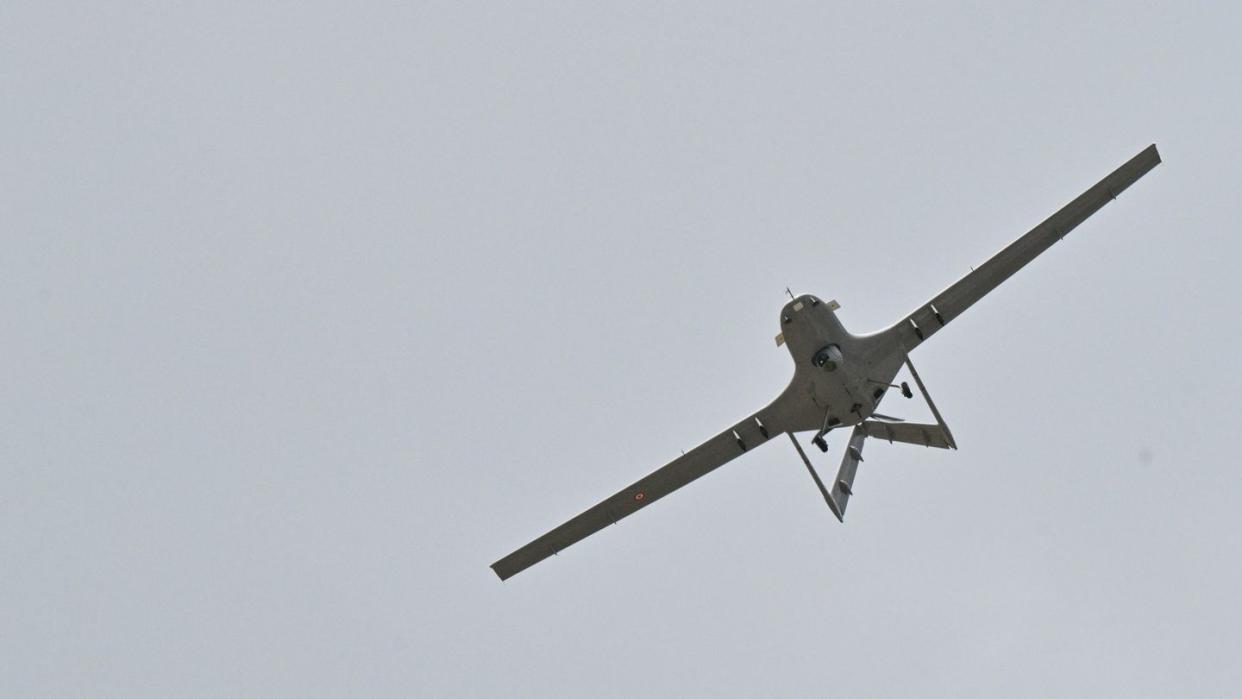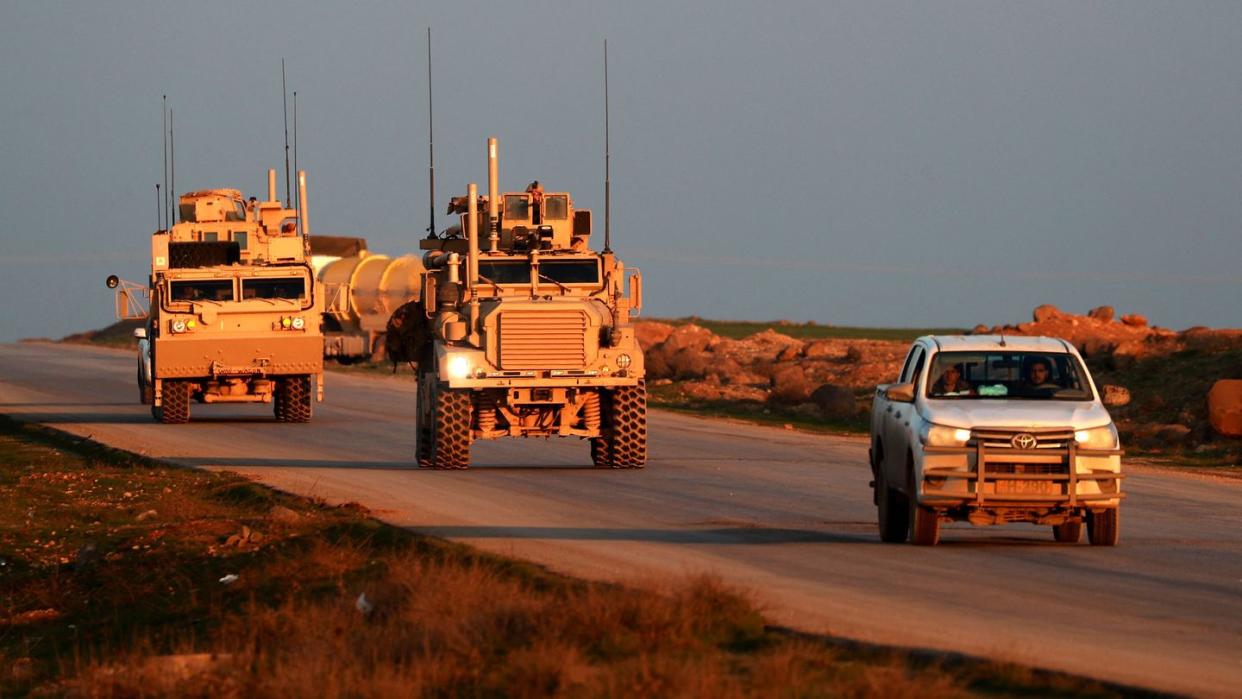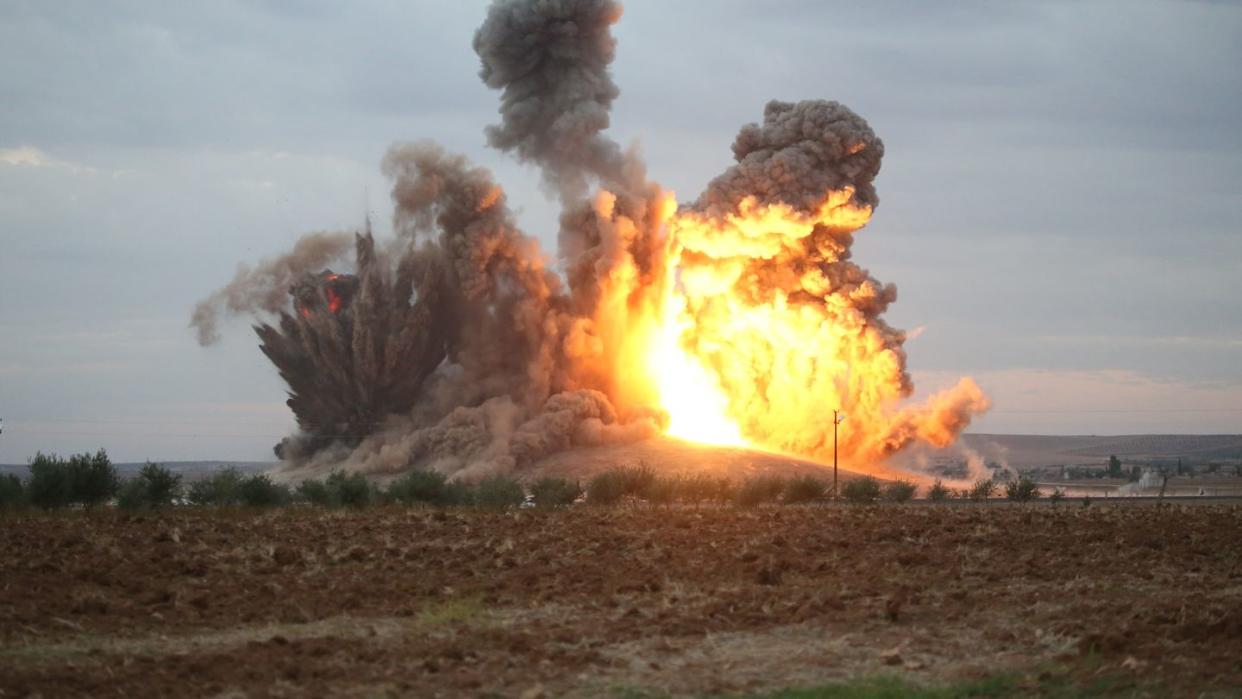A U.S. F-16 Shot Down a Turkish Drone Buzzing Over American Special Ops in Syria

It’s no secret that the U.S. and Turkey don’t see eye-to-eye when it comes to Kurdish-led separatist Syrian Democratic Forces (SDF) in Syria. The U.S. sees them as vital allies in the fight to finish off ISIS, while Turkey claims that they’re terrorists with designs on Turkish territory.
But more than the usual harsh words were exchanged at 11:30 AM local time on Thursday, October 5. A missile-armed Turkish Bayraktar TB2 combat drone began directly approaching a camp jointly occupied by SDF and U.S. special forces at Tal Baydar (or Tell Baydar) in northeastern Syria, located 23 miles south of the Turkish border.

Since 7:30 AM, Turkish drones had been raining laser-guided missiles down on Kurdish positions near Hasakah—some as close as 1 kilometer away to the U.S. base and falling within a pre-designated Restricted Operating Zones protecting U.S. troops.
After more than a dozen calls to Turkish officials went unanswered, the drone had closed within a half kilometer of the base’s position. Finally, an American F-16 jet shot down the drone with a missile at 11:40 AM. Reports, however, claim that the TB2 crashed near Tall Tamr, roughly 13 miles southwest of the base.
Global @coalition shot down a #Turkish drone after it approached a military base pic.twitter.com/85sUTy47jR
— Hoshang Hassan (@HoshangHesen) October 5, 2023
#Breaking:
Local #Kurdish media are reporting that a Turkish Bayraktar drone was shot down in #Tal_Tamr area #NESyria pic.twitter.com/izvJHj93RF— MOHAMMAD HASAN (@MHJournalist) October 5, 2023
Ironically, the incident occurred just hours after a U.S. general emphasized the “open communications” between U.S. forces in the region and the Turkish Air Operations Center. But there may be an explanation: the drone was reportedly operated by the Turkey's National Intelligence Agency (MIT) service, not the Turkish Air Force, explaining the Turkish defense ministry's denial that they had lost a drone.
The day before, Turkey said that it had determined that two PKK members—who attacked the Interior Ministry building in Ankara last weekend—had entered from Syria. In retaliation, Turkey said that it would view SDF infrastructure and energy facilities in Syria as legitimate targets.
Turkish strikes on SDF-held oil facilities do indeed appear to have taken place the same day. At least eight were reportedly killed in attacks on a car and a military outpost near Amuda. A group called the Syrian Observatory for Human Rights counts 10 killed in 17 Turkish drone strikes targeting an oil facility, oil and petrol stations, and two electricity transfer stations.
Oil fields in #northeastern\Syria have been targeted by #Turkish drones since this morning pic.twitter.com/1KnDdobnCz
— MOHAMMAD HASAN (@MHJournalist) October 5, 2023
The incident probably won’t improve Turkey’s poor relationship with the U.S., though its potential for escalation also seems limited. Turkish officials have let it be known that the shoot-down will not deter its further planned strikes on SDF targets.
The Pentagon now claims that the Turkish drone didn’t appear to be intentionally targeting U.S. troops, but was downed because it had nonetheless entered a restricted zone in which U.S. troops were vulnerable to attack.
But broadly, the muted and largely non-accusatory statements from U.S. and Turkish officials on Thursday indicate that both prefer to play down the incident rather than stir up rancor over it.
It’s possible that the TB2’s operators in the intelligence service were somehow unaware that it was approaching the American base and were not receiving the warnings, as they are in communication with the U.S. military less consistently than Turkey’s air force. De-confliction in combat zones is a difficult business even when it comes to friendly fire, let alone coordinating with another country’s military.
But it’s also possible that they were attempting to intimidate the U.S. forces in the area, and perhaps even trigger a withdrawal. In October of 2019, U.S. special forces in an outpost near Kobani were apparently deliberately bracketed by Turkish artillery. 155-millimeter shells landed 300 meters to either side of their location, which was known to Turkish troops.
Still, in 2023, it’s pretty well established that shooting down a drone is perceived as an act below the threshold for war or lethal retaliation—even though no one is going to outright state that. In 2019, the Trump administration canceled a planned airstrike on Iranian air defenses at the last minute after they downed a large RQ-4N drone over international waters using a missile. Admittedly, nations mostly avoid direct kinetic attacks on drones not in their own airspace—though destructive harassment tactics like Russia’s dangerous buzzing of MQ-9 reconnaissance drones over the Black Sea is apparently not seen as above the pale.
Moreover, there are sharp limits to how far Turkey and the U.S. would be willing to escalate this episode, especially in a region where the U.S. still stores tactical nuclear weapons.
Why Turkey and America disagree about the Kurds in Syria
Around 900 American troops are stationed in territory held by the SDF in Syria, who are seen as key allies and do the hard, dirty work of hunting down and finishing off dangerous ISIS extremists. The Pentagon reported, for example, that in September, joint U.S.-SDF operations reportedly captured seven ISIS fighters and killed one in Syria.
But Turkey argues that the Syria-based SDF is no different than the PKK Kurdish insurgents who have been waging a separatist insurgency in Turkey for decades.
The current SDF-U.S. alliance arguably began in September of 2014, when U.S. air power came to the rescue of Kurds besieged by ISIS in the bloody battle of Kobani, Syria. Nearby Turkish tanks and artillery refrained from intervening.

As a U.S.-led, anti-ISIS military coalition formed, the SDF—using a hammer and anvil strategy—became its key instrument in physically clearing and occupying ISIS-held territory in Syria. First, American warplanes and rocket artillery would pound ISIS-held areas with smart bombs and missiles. Then, SDF forces would advance on the ground, get ambushed, and suffer casualties fighting surviving ISIS units until a handful of accompanying Western special forces operator could call in more air or artillery strikes to finish off the newly revealed ISIS positions. This arrangement kept Western casualties minimal, but 11,000 Kurds died in the anti-ISIS struggle.
However, in October of 2019—mere hours after the Trump administration obligingly announced it was withdrawing U.S. troops from some SDF-held regions—Turkey attacked and seized SDF-held settlements west of the Euphrates River. Turkey would like to attack the remaining SDF-held regions, but remains blocked by the smaller remaining U.S. presence.
The shoot-down is also notable for involving Turkey’s internationally notorious Baykar TB2 Bayraktar combat drone (or UCAV) and its laser-guided MAM-C and MAM-L mini smart bombs. These have seen prominent combat use over Libya, Syria, the Karabakh region and Ukraine. They are also sophisticated enough that one likely cost more (potentially around $5 million) than the air-to-air weapon used to destroy it.
The type’s destruction by an F-16 is also intriguing. Most UCAVs are much slower than jet fighters, and aren’t really expected to survive hostile encounters with them. But they can still be tricky to target, due to smaller size and thermal signature.
Recently, U.S. F-16s have been upgraded with new capabilities, including a high-resolution AN/APG-83 SABR radar and a laser-guided rocket targeting system that could improve the type’s effectiveness against drones. There is no confirmation, however, that such equipment was involved in the recent kill.
You Might Also Like
